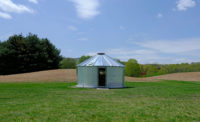With researchers estimating that a majority of the world’s population will live in cities by 2025, an urgent need to better understand the urban landscape has arisen. In that spirit, The New School, a Manhattan-based university, has created an environmental studies program centered on urban ecology and design. The program will launch in 2009, pending state approval.

Two degree tracks will be offered: a bachelor of science with a focus on urban ecosystems or sustainable design, or a bachelor of arts with a focus on urban ecosystems or policy. Students will take courses—with titles like “Planning the Sustainable City” and “Ecotopian Design”—in the university’s liberal arts school (Eugene Lang College) and design school (Parsons). All students are required to complete a for-credit internship to help prepare them for a career in government, advocacy, education, community development, or construction.
The program will be administered through the university’s Tishman Environment and Design Center, created in 2006. “The urban ecosystem and sustainability may be the most important areas of environmental study in this century,” says Joseph Westphal, the center’s director.
The trend extends beyond academia. This summer, New York’s Center for Architecture presented an exhibition called Ecotones: Mitigating New York City’s Contentious Sites, sponsored by AIA New York and the American Society of Landscape Architects. The show explored design opportunities in “ecotones,” or transitional areas in cities where needs collide (when a neighborhood overlaps with an industrial zone, for instance). It showcased various projects, such as landscape architecture firm Dlandstudio’s proposal to transform a former industrial area alongside Gowanus Canal, a polluted waterway in Brooklyn, into a “sponge” park. The park would not only provide recreational space for residents, but also would help rehabilitate the landscape, partially through the use of plants that absorb toxins and heavy metals.
Rick Bell, executive director of AIA New York, says the Ecotones exhibition was “very much in the same spirit as the environmental studies program.” Both explore design not as an “isolated subject,” he says, but as capable of “creating living environments that connect the inside to the outside, buildings to the world.”






Post a comment to this article
Report Abusive Comment